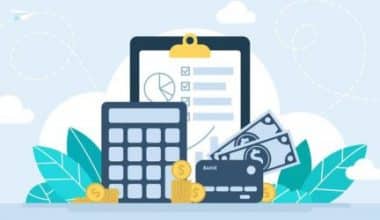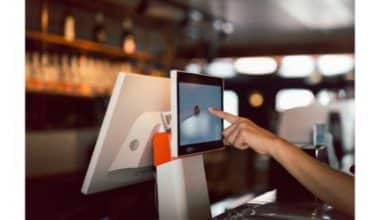One of the terms you’ll always come across in business is sole proprietorship. It’s one of the most prevalent formation options for single-owner firms because it’s simple to set up, provides a lot of operating independence, and has some significant tax advantages. In this article, we’ll go through what the sole proprietorship is all about, including some examples of famous business models that started with sole proprietorship.
What is A Sole Proprietorship?
A sole proprietorship is a business entity that has a single owner. As a sole proprietor, you can work as a freelancer or a small business owner. As such, you are in complete control of your finances.
Sole Proprietorship Examples
You may be wondering if a sole proprietorship is the best option for you as an independent business owner or contractor in the early phases of business establishment. Many home-based enterprises, you may not realize, are sole proprietorships.
As businesses grow, many of them transform into a limited liability company (LLC) or a corporation. Here are some examples os sole proprietorship business models:
#1. Freelance Photographers
Freelance photographers may work from a studio or from home, and they may provide on-location photo shoots for events such as weddings and other special occasions. Many freelance photographers begin their careers with nothing more than a camera, a laptop or computer, and a car to drive to locations.
#2. Plumber
Some plumbers work for construction businesses and city or county departments to keep residential, commercial, and industrial structures in good condition.
Many, on the other hand, are self-employed and work as independent contractors for construction businesses or serve the public. A sole proprietorship is a wonderful way to start a plumbing business because it allows the owner to create a brand without spending time and money registering for a formal business structure.
#3. Graphic Artist/ Designer
Graphic designers develop marketing materials for firms such as flyers, brochures, and logos. When they are not employed by a marketing or advertising agency, most graphic designers work as freelancers from home. This is why a sole proprietorship works effectively for their business’s license and tax requirements.
#4. Freelance Writers
Freelance writers contribute to a variety of print and electronic outlets, such as magazines and websites. They frequently contribute articles, blogs, and other informational pieces to newspapers that specialize in specific industries, interests, and causes. These writers are independent contractors, as the name implies, and their job is ideal for a lone enterprise.
#5. Landscapers
Landscapers are often a one-person operation, thus a sole proprietorship is an excellent choice. However, keep in mind that many sole entrepreneurs expand their businesses over time. Landscapers are no exception. As they locate new work that demands more staff, they may decide it’s time to restructure the company as an LLC, corporation, or partnership.
#6. Financial Advisor
If there is only one owner, financial planners can operate as sole proprietors. Working with small enterprises and people is part of financial planning. Individuals can use financial advisors to assist them plan for security investments, retirement, and even major expenses. Financial planners assist businesses in setting up employee perks such as retirement plans.
#7. Housekeepers
A sole proprietorship may be the ideal option for someone who owns a housekeeping business. These types of enterprises typically outgrow an individual owner, hence, as with landscaping, an owner may desire to reorganize the company into a different business model that is ideal for operational and tax purposes.
#8. Franchise owners
Believe it or not, a franchise owner can work as a sole proprietor. The franchise owner pays a fee to the franchiser in exchange for the right to use the company’s name. When it comes to taxes and financial liabilities, a single franchisee is considered a sole proprietor.
#9. Crafting and Other Creative Activities
Many innovative individuals are leveraging their talents and converting their craft-making hobbies into small companies by using platforms such as Etsy and Shopify. Many of these enterprises are set up as sole proprietorships, allowing individuals to deduct company expenses while still growing a customer base and making money on the side.
#10. Social Media Manager
With the development of social media, freelance social media management is a burgeoning profession that fits well with a sole proprietorship business model. Because you will most likely be doing all of the work yourself, working as a single entity without additional employees can be advantageous.
#11. Accountant
During tax season, freelance accountants are common. A sole proprietorship is simple to establish and maintain because you will be doing the work yourself without the assistance of others. Separate tax records are not necessary.
#12. Personal Coach
Personal training is the final example of a solitary proprietorship on our list. Because personal trainers work one-on-one with clients, this business model works effectively because you are unlikely to hire other personal trainers to help you with your clients. However, if you do decide to create your own gym in the future, you have the option of modifying your business plan at a later point.
Examples of Famous Business Models That Started With Sole Proprietorship
Some of the most well-known business names began as sole proprietorships. Although you’d never guess it by looking at them today, these businesses began with a single person at the helm of a small firm. Let’s see some examples
#1. eBay
Pierre Omidyar founded eBay in response to difficulties his girlfriend had when trying to sell ancient Pez dispensers and other items. Omidyar recognized that there was a large community of people interested in selling old products, and the Internet looked like the natural place to bring them together. In 1995, he began a sole proprietorship with a prototype named Auction Web using his personal webpage. The corporation was incorporated and the name was changed to eBay in a short amount of time. eBay went public in 1998, but it was a little sole proprietorship just three years before.
#2. Kinkos
Kinkos is a wonderful example of a company that expanded while maintaining a sole proprietorship business structure. Kinkos founder Paul Orfelea, like many other startup CEOs, chose to establish the company as a single proprietorship. As his company evolved, he opted to keep the sole proprietorship structure rather than change to a corporate one, forging partnerships with people all over the country. The corporation comprised of 450 separate partnerships when it was sold to a private investment entity. Inconvenient? Perhaps, but it demonstrates that a single proprietorship firm form can allow for significant growth.
#3. Annie’s Homegrown
Annie’s Homegrown was founded by Ann Withey (co-creator of Smartfood popcorn) to produce and distribute organic pasta, dinners, and snacks. Despite the company’s success, she elected to run it as a sole proprietorship since it allowed her to focus on the creative side of the business while also allowing her to bring new goods to market fast. Annie’s Homegrown eventually went public in 1998, but their story demonstrates the advantages of operating as a sole proprietorship for successful small businesses.
#4. Amazon
In 1994, a guy named Jeff Bezos quit his stable, six-figure full-time job to follow his dream of founding Amazon, an online bookstore. It was a dangerous decision, but Bezos was certain that the internet was the place to be, so he came to Seattle with his wife and dog to start his firm.
Bezos worked from the garage of his rented house for the first year, storing, packaging, and shipping books to consumers. He used that time to learn how to source books and set up an online system that would allow people to easily purchase from his website. Amazon, dubbed “Earth’s Biggest Book Store,” debuted in 1995 with over one million volumes.
Only four years after the first book was sold, Amazon became a massive online marketplace, expanding its offerings to include toys, music, gadgets, and more. In the present day, the website generated $386 billion in global sales in 2020 and employs over 1.3 million people.
#5. Virgin
While living in the heart of a bustling London music scene in 1969, Branson had the notion to create a mail-order record company. Even though it was a small firm at first, it was profitable enough for Branson to expand. He named his discount record store Virgin after the entire workforce (the same employees who worked on his magazine) because they were all business virgins.
From then, his company expanded, first into a successful record label that signed bands like Sex Pistols and the Rolling Stones, then into industries including railways, mobile phones, banking, bridal apparel, gyms, air travel, and many more.
#6. J.C. Penney
In 1988, James Cash Penny worked for a tiny retail company until he purchased the shares from the previous partners. J.C. Penny began as a private proprietorship but eventually incorporated roughly 25 years later.
#7. Sears, Roebuck & Co.
Sears, one of the largest retailers in the United States, began as a sole proprietorship. Richard Warren Sears sold jewelry and watches by mail order during the time. Later, he formed a company with Alvah Curtis Roebuck to repair timepieces, and the solo proprietorship became a partnership.
#8. A&W
J. Willard Marriott started his root beer stand as a sole proprietorship, labeling his hobby as a separate legal organization. As his profits increased, he restructured his business, as many solo entrepreneurs did at the time, and launched his A&W restaurant network. Following the expansion came incorporation, and A&W led to the founding of the Marriott Hotel Chain.
#9. Kate’s Real Food
Kate Schade began Kate’s Real Food as a sole proprietorship. Schade was a seller selling energy bars in a small town in Idaho (Victor, to be more precise). Kate shifted from sole proprietorship to corporate structure and extended her firm as the little business grew and she began selling outside the state (and even outside the country).
Is Apple A Sole Proprietorship?
Apple is not a sole proprietorship. Before its inception, Jobs met an architect called Steve Wozniak, and the two co-founded Apple Computer in 1976. A year later, the company was incorporated as a limited liability company.
Is Starbucks A Sole Proprietorship?
Starbucks is a corporation, mainly due to the fact that it is a legal entity distinct from its owners, with the ability to conduct business and possess property.
Is Coca-Cola A Sole Proprietorship?
Coca-Cola began as a sole proprietorship in 1886, owned by Dr. John S. Pemberton and purchased by Asa Chandler in 1892. The business has grown through time and is now a corporation.
Is Walmart A Sole Proprietorship?
Long before Walmart became a global retailing conglomerate, founder Sam Walton operated a couple of small retail establishments as a sole proprietor in Arkansas in the 1950s and 1960s. In 1962, he launched his first Walmart, and the company went public in 1970.
Is YouTube A Sole Proprietorship?
You will be regarded a sole proprietor as a YouTuber; however, you can establish your YouTube Channel as an LLC or partnership.
When Should You Choose a Sole Proprietorship?
Now that we’ve discussed what a sole proprietorship is and some examples, let’s look at when you should use this form of company model:
- If you intend to operate a single-person business without adding any further employees.
- If you are establishing your business with your own personal funds rather than obtaining a business loan.
- You have a business plan that is long-term and has little to no risk of failing.
- If you are comfortable with your personal assets being used as collateral if your company goes bankrupt in the future.
- You want complete control over your company and how it functions.
- You want to establish your business in a reasonably simple and economical manner.
- You want to experience simple income tax filing and lower registration expenses.
In Conclusion,
From what we have here, you’ve seen that there are various examples of sole proprietorship business models, ranging from the freelance photography and writing, to the famous brands that we now relate to. This goes to show that sole proprietorship can be a great way for any upcoming business owner to start and grow his business.
Frequently Asked Questions
Why do people become sole proprietors?
People become sole proprietors mainly because of the minimal paperwork and low start-up costs.
Can sole proprietors have employees?
Yes, sole proprietors can have as many employees as they want, including spouses and family members.
Who gets the profits from sole proprietorships?
Profits from sole proprietorships are immediately distributed to sole proprietors. You do not need to formally take an income from your small business revenue because you and your business are not separate legal entities. Instead, your finances and those of the small firm are inextricably linked.
Related Articles
- Business Structures: Different Types of Business Structures Explained
- Sources Of Capital: Best Sources For Start-ups In 2023
- UNLIMITED LIABILITY EXPLAINED !!! Business Definition & All You Need
- How To File Sole Proprietorship Taxes: Detailed Guide
- SOLE PROPRIETORSHIP LICENSE: How To Obtain One






